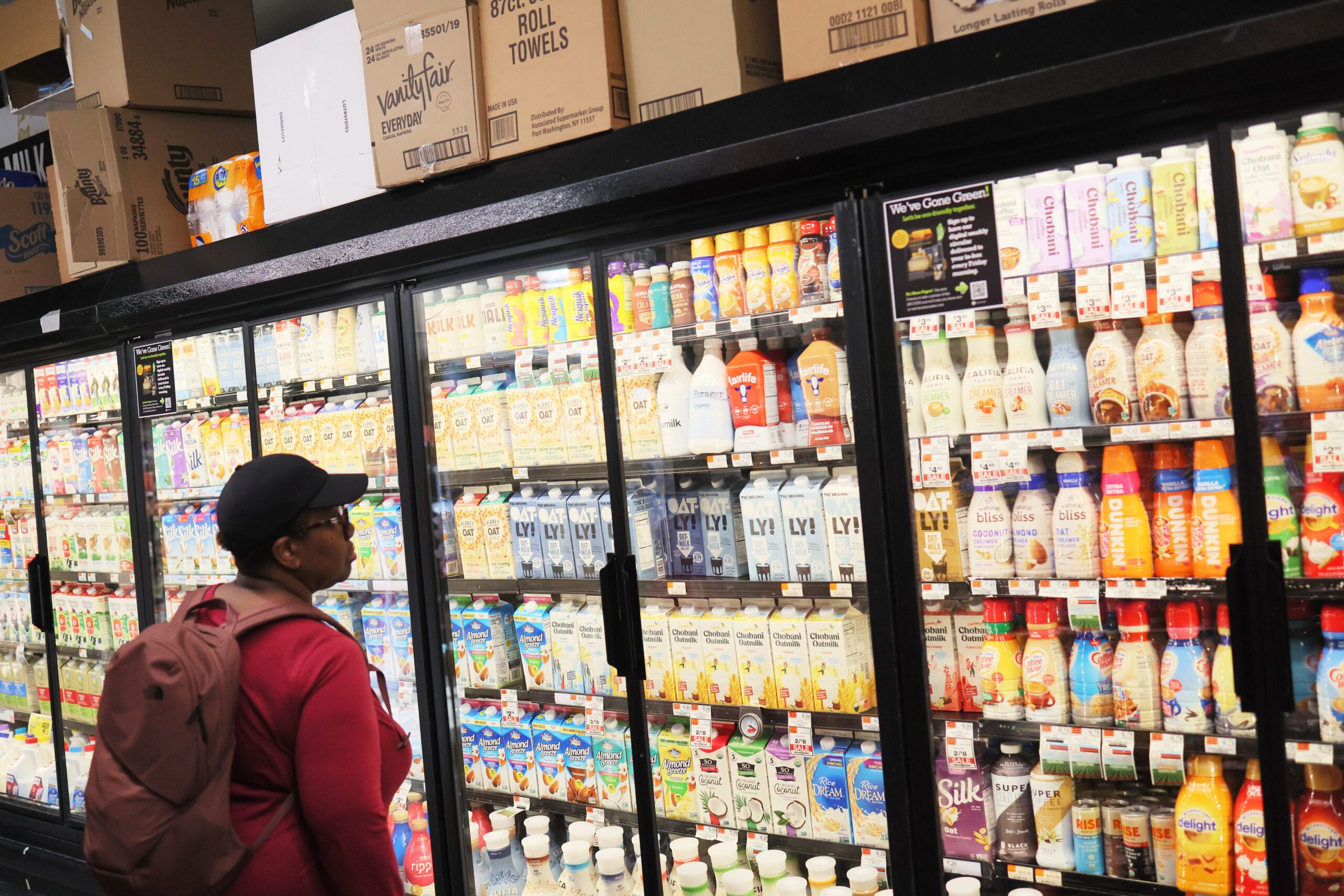

Americans struggling with a two-year inflation run-up continue to get some relief from two of the biggest drivers -- at the gas pump and in grocery stores.
Other costs, especially rent, are still climbing.
Inflation slowed for an 11th straight month in May as grocery price increases eased again and gas more than reversed the previous month’s rise.
Overall, consumer prices increased 4% from a year earlier, down from 4.9% in April and a 40-year high of 9.1% last June, according to the Labor Department’s consumer price index. That’s the smallest yearly increase since March 2021. On a monthly basis, prices rose 0.1% following a 0.4% increase in April.
What is the difference between core CPI and CPI?
Core prices, which exclude volatile food and energy items and better capture longer-term trends, have been tougher to tame. They rose 0.4% for the third-straight month. Still, that lowered the annual increase from 5.5% to 5.3%, the lowest since November 2021.
Protect your assets: Best high-yield savings accounts of 2023
How long will the Fed keep raising rates?
The report presents a quandary for a Federal Reserve that’s expected Wednesday to pause its 14-month campaign of aggressive interest rate hikes aimed at corralling inflation to assess their economic impact. While price increases broadly have eased, the Fed is more concerned about stubbornly elevated core inflation.
Another reason Fed officials indicated they’ll probably hold rates steady this week is to gauge the effects of financial stress triggered by the recent collapse of three regional banks hit with deposit runs. But so far the impact of the crisis on the economy has been limited, Goldman Sachs says.
As a result, some Fed officials have said they were leaning toward skipping a rate increase this week but hiking again in July.
What is the outlook for the price of gasoline?
Gas prices fell 5.6% in May and are down nearly 20% from a year earlier. Pump prices have been choppy but have remained relatively low amid lingering recession fears that have held down global oil demand and prices. Nationally, regular unleaded gasoline averaged $3.59 a gallon Monday, up from $3.54 a month ago but down from a peak of $5 in June 2022.
Will food prices go down in 2023?
Grocery prices edged up just 0.1% after two straight declines, pushing down the yearly increase to 5.8% from 7.1%. The cost of commodities such as wheat and corn has fallen in recent months because of easing global demand.
In May, the price of eggs dropped by a whopping 13.8%, the fourth straight monthly decline after a string of sharp bird flu-related increases, and costs are now down 0.4% over the past year. Bacon prices fell 1.3%; fish and seafood costs dipped 0.9%; and fresh biscuits, rolls and muffins were down 1.1%.
But some costs drifted higher. Bread prices rose 0.4% and are up 12.5% annually. Uncooked ground beef jumped 2% and chicken, 0.3%.
Restaurant prices increased by 0.5% and are up 8.3% over the past year.
Why is CPI important?
The Federal Reserve makes interest-rate decisions based on achieving its dual mandate of price stability and maximum employment. The Fed looks at CPI as one measure to gauge if prices are “stable” even though its stated inflation goal is PCE around 2%.
"CPI probably gets more press, in that it is used to adjust social security payments and is also the reference rate for some financial contracts,” the Cleveland Fed said.
The Fed's next policy meeting ends on Wednesday, June 14. That afternoon, the Fed will announce its interest rate decision and issue a summary of economic projections of what it expects inflation, employment, interest rates, and economic growth to be in coming years. Most economists expect the Fed to keep rates steady Wednesday but project at least one more rate increase this year.
What is the U.S. inflation rate by month?
The Inflation rate has gone down, falling by more than half from its peak of 9.1% in June of last year. Here's a look at the U.S. inflation rate in the U.S. by month since May 2022:
- May 2022: 8.6%
- June 2022: 9.1%
- July 2022: 8.5%
- Aug 2022: 8.3%
- Sept 2022: 8.2%
- Oct 2022: 7.7%
- Nov 2022: 7.1%
- Dec 2022: 6.5%
- Jan 2023: 6.4%
- Feb 2023: 6.0%
- Mar 2023: 5.0&
- Apr 2023: 4.9%
- May 2023: 4.0%
Is CPI the only measure of inflation the Federal Reserve considers?
No. Actually, the Fed’s preferred inflation gauge is the Personal Consumption Expenditures price index (PCE) from the Bureau of Economic Analysis. PCE also is broken into headline and core but measures a different basket of goods and services and includes a wider group of people surveyed.
PCE measures price changes for all direct and indirect consumer consumption, not just literally what urban households are paying out of pocket like in CPI. For example, CPI would only capture what urban households pay out of pocket for medical expenses, but PCE includes costs covered by employer-provided insurance, Medicare, and Medicaid.
Also, PCE accounts for substitutions. “Thus, if the price of bread goes up, people buy less bread, and the PCE uses a new basket of goods that accounts for people buying less bread,” the Cleveland Fed said. “The CPI uses the same basket as before.”
CPI tends to run hotter than PCE.
What was PCE in April?
Core PCE rose 0.4% from March to April, the same as in the previous month, and 4.7% from 12 months earlier. Year-over-year, the core PCE has changed little since it first touched 4.6% in December.
How Dow futures are trading before the CPI report?
Futures tied to the broad stock market gauge, the S&P 500 index, were up 0.09% at 4,346.50 early Tuesday morning, while futures connected to the blue-chip Dow were down 0.02% at 34,077 and the tech-laden Nasdaq-100 traded up 0.3% at 14,843.25.
What is CPI and what is core CPI?
CPI, short for the consumer price index, is an inflation gauge prepared by the Bureau of Labor Statistics each month. It measures the average change over time of what urban consumers pay for a market basket of consumer goods and services.
There are two main parts to CPI:
- Headline, or overall, CPI
- Core CPI, which excludes the volatile energy and food sectors
“Over the short term, the core measure may give a more accurate reading of where inflation is headed, but people do buy food, fill up their gas tanks, and heat their homes, so headline inflation more accurately represents people’s actual expenses,” according to the Cleveland Federal Reserve.
Source link








